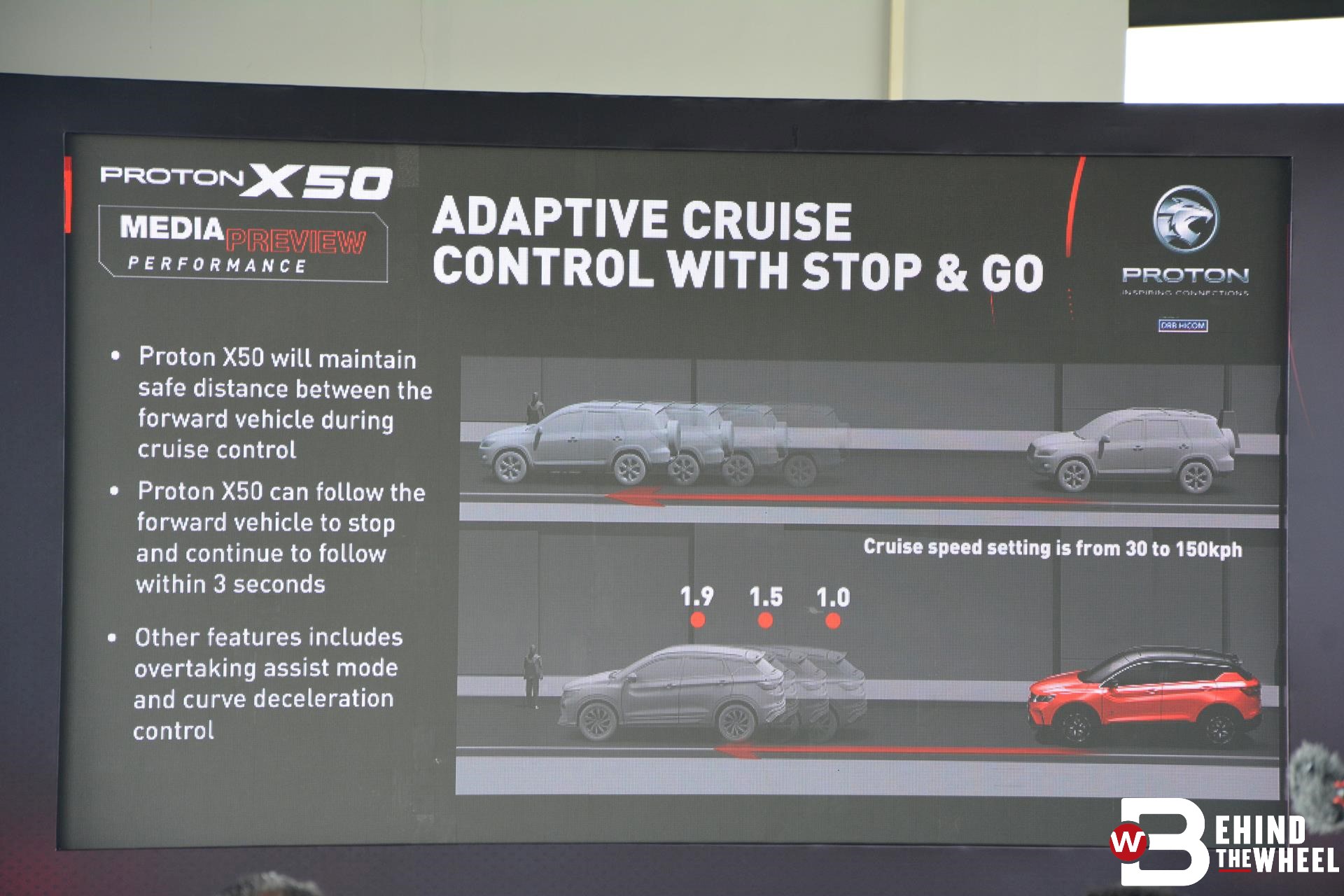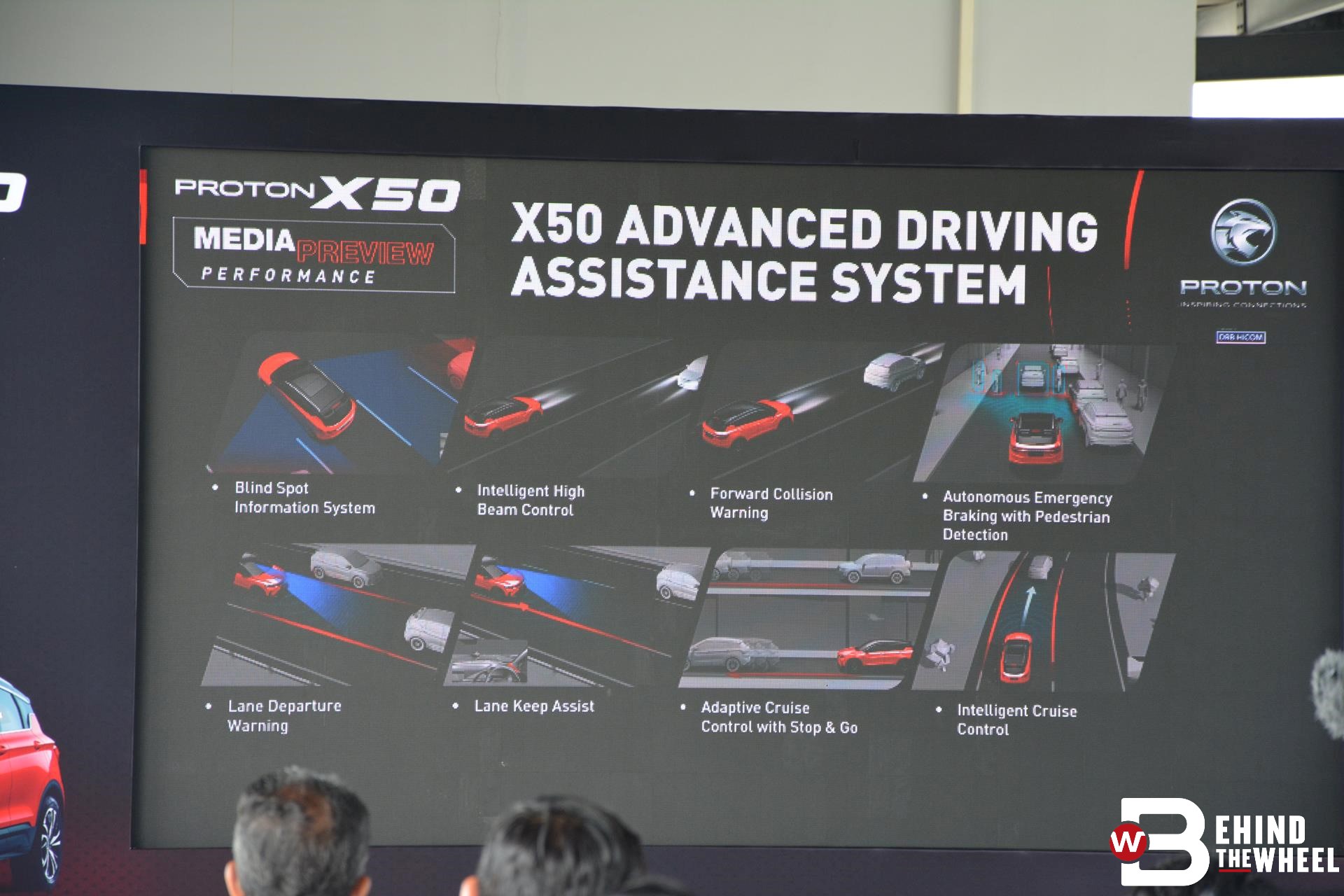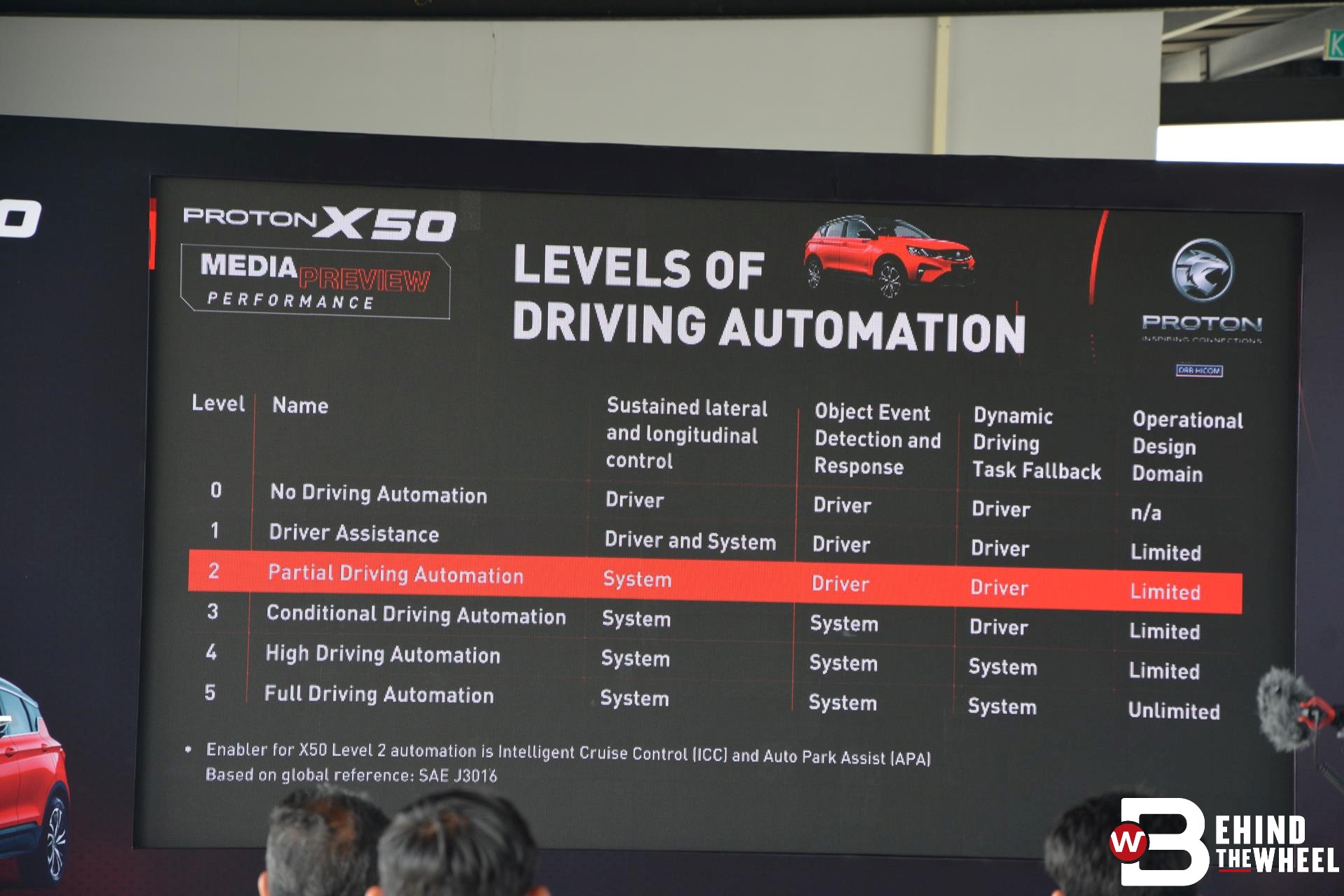Together with the introduction of the X50 last month, Proton also inaugurated a new trim designation for its models; Flagship, that dethrones the Premium trim, as the name specifies, as the flagship variant for a model.
Quite a bold move to call a trim level Flagship but seeing as the X50 Flagship will come as standard with the suite of Advanced Driver Assistance Systems (ADAS) that’s more advanced than the X70.

Advertisement
A follow-up preview for members of the media detailed the complete suite that the ADAS comprises and justifies the claim made that the X50 Flagship will be capable of Level 2 autonomous driving.
We’ve all heard the term “autonomous driving” before but what exactly does it entail? Here’s a quick recap of the different levels of autonomous driving tech as described by the Society of Automotive Engineers (SAE); now rebranded to just SAE International. We’ll skip detailing what they do because the name is pretty self-explanatory; even for those dropped on the head as babies.

For all the hype that you’ve heard about Tesla and its Autopilot feature, it’s still essentially a Level 2 of autonomous driving… the same as the X50. However, there’re five levels of autonomous driving:
Level 1: Simply put, this is where the vehicle governs a singular aspect of a certain exercise and the driver is very much hands on. Examples are cruise control and even adaptive cruise control that sees the driver controlling steering and the system controls engine power to maintain a set speed or engine with braking power to maintain and vary speed. Parking Assistance where the driver controls speed with the vehicle inputting steering falls under here as well.
Level 2: Here, the vehicle handles accelerating, braking, and steering but the driver must be actively monitoring the situation and be prepared to intervene immediately if necessary. Some refer to Level 2 as “hands off” automaticity but in reality, the driver’s hands being in contact with the steering wheels is often mandatory for the system to function. Often, cameras in the cabin will monitor the driver’s eyes to ensure full attention is on the road.
Level 3: The step up from Level 2 to Level 3 is often difficult to distinguish because the systems appear to function almost identically but the truth is the driver’s able to safely turn their attention away from the driving tasks here. The vehicle can handle situations that even demand an immediate response but the driver still has to be available to intervene within a stipulated timeframe; akin to a co-driver that taps you on the shoulder when it’s your time to take the wheel.
Level 4: This level doesn’t require the driver’s attention but the vehicle’s self-driving capability is limited within spatial areas (geofenced) or under set circumstances. Outside of these circumstance, the vehicle will be able to park safely at the side of the road without driver intervention.
Level 5: This is pretty much a completely automated vehicle with no driver intervention required at all; even a steering wheel is optional. The vehicle is capable of operating itself on all roads under all circumstances.
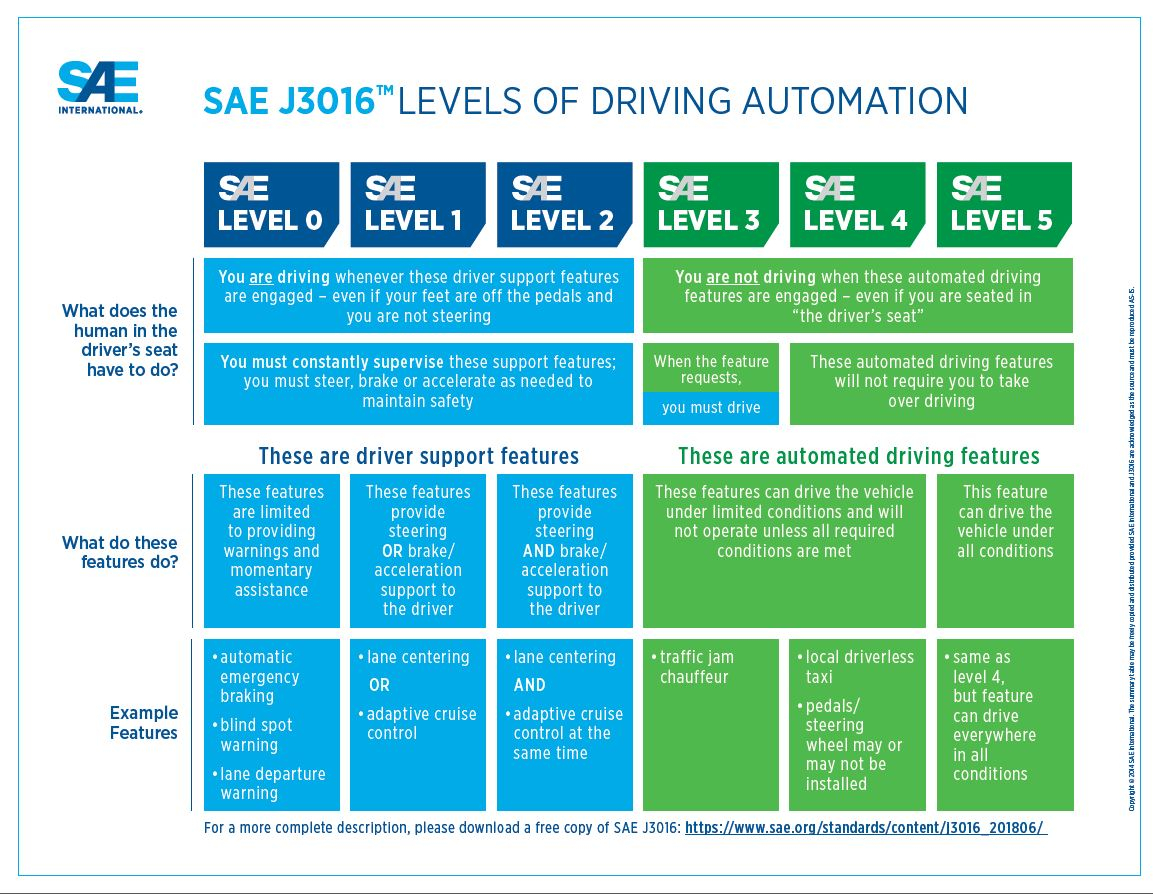
Now that we’re all up to date on the levels of autonomous driving, what exactly does the X50’s Level 2 mean and comprise?
First up is the forward collision warning (FCW) system that’s found in the X70 as well. Here, there’re three stages of sensitivity. The first stage sees a visual warning displayed on the instrument cluster if the system detects that the distance to the vehicle in front is an unsafe distance.
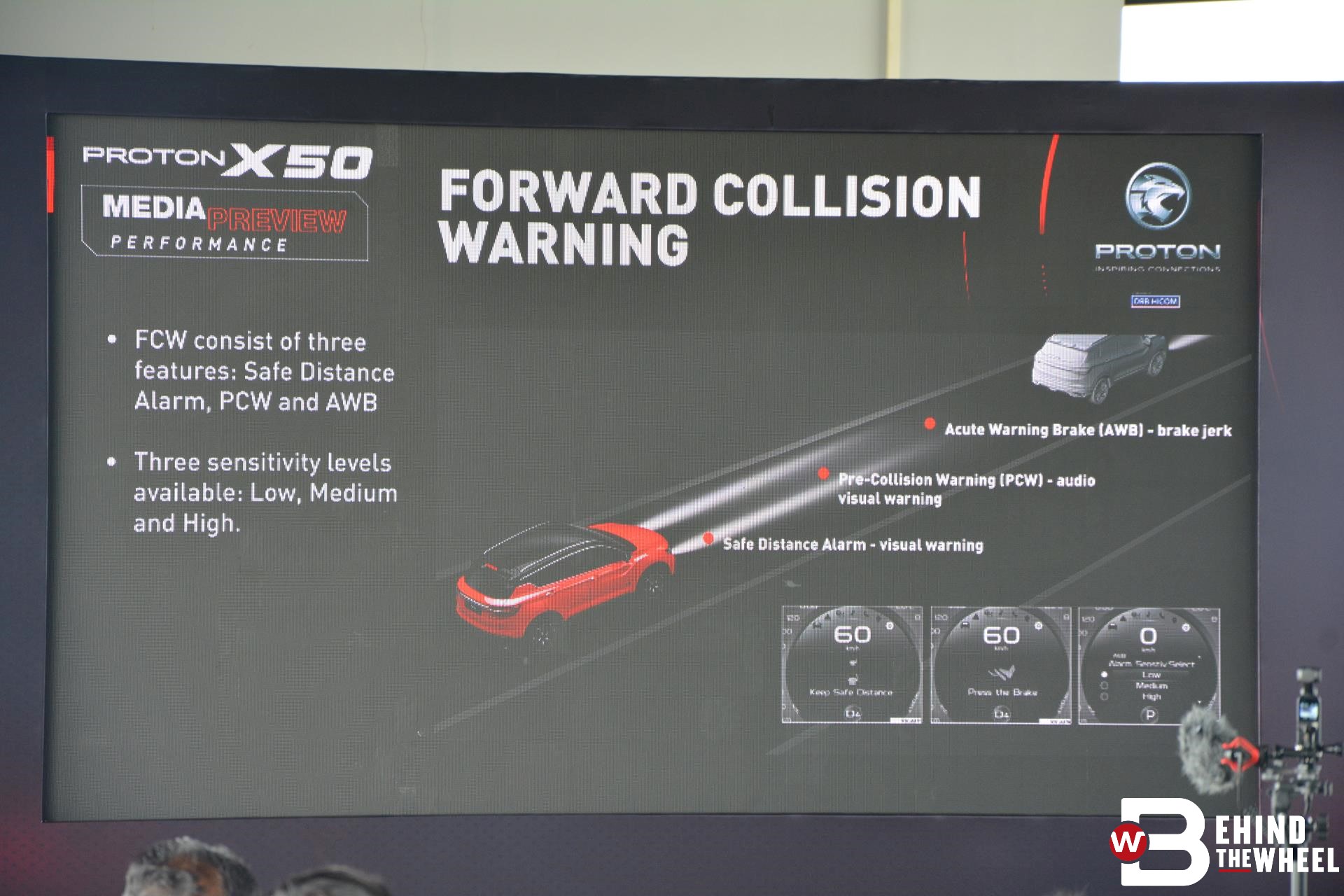
If the driver continues to accelerate and close the gap, the pre-collision warning steps into provide audio and visual alerts for the driver to engage the brakes; thus, being the second stage.
The final stage sees an acute warning and the intervention of the autonomous emergency braking (AEB) system to mitigate a crash if the driver fails to respond or doesn’t apply sufficient braking pressure.

AEB functions between 4-150kph for vehicles in motion and up to 80kph for stationary vehicles. The difference between the X50 and X70 is that the system in the former is also capable of detecting pedestrians up to 70kph whereas the latter can’t detect pedestrians.
Lane departure warning (LDW) is the next piece of the Level 2 pie. As the name suggest, the system alerts the driver via audio or steering wheel vibrations if the vehicle veers out of the lane markings. In addition to this, there’s lane keep assist (LKA) that actively intervenes by turning the electric-powered steering wheel to keep the vehicle within the lane markings.
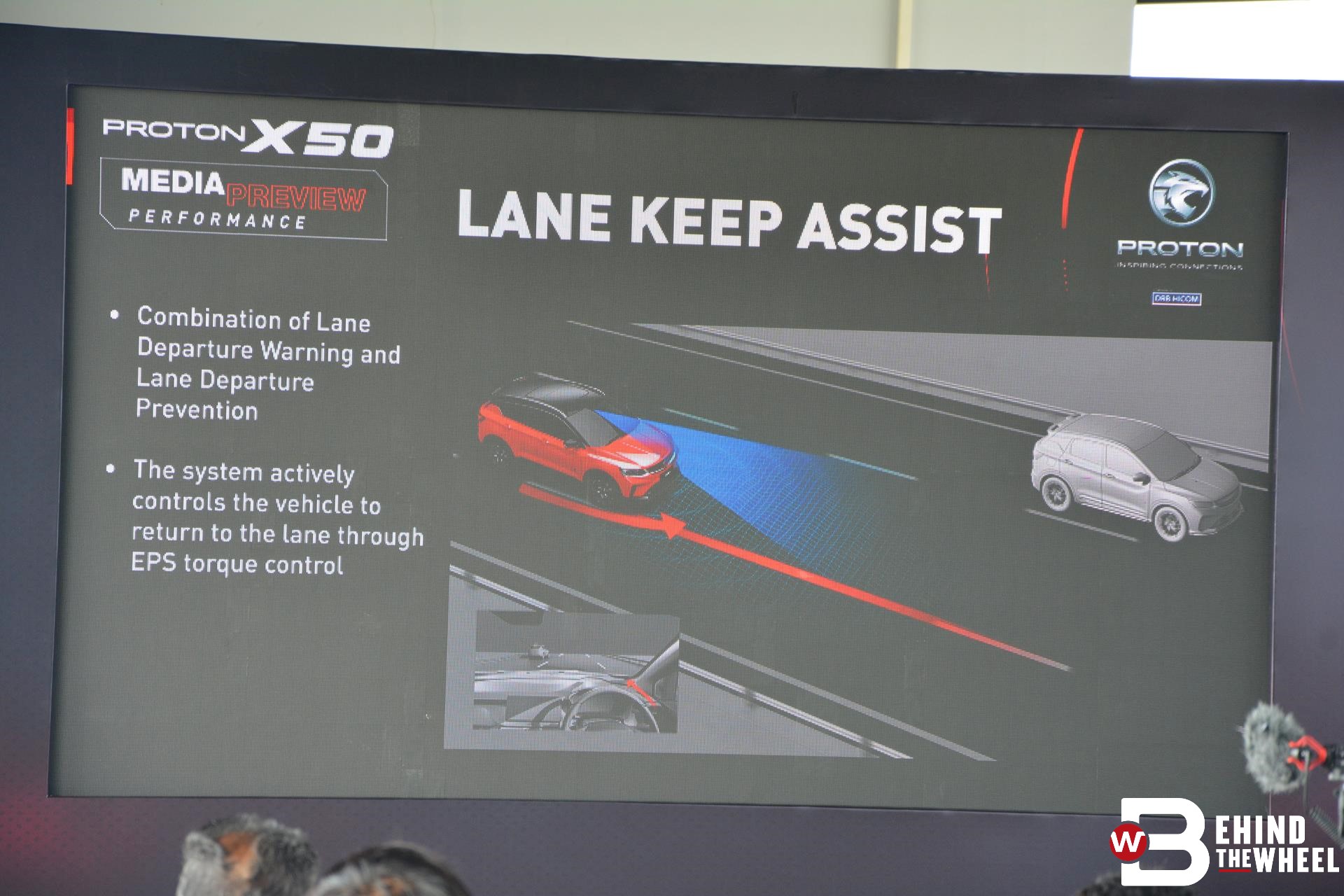
Completing ADAS is the blind spot information system that lights up an indicator on the side-view mirrors if a vehicle is detected in the X50’s blind spot.
To sum things up the, the Level 2 autonomous driving capability stems from the combination of the adaptive cruise control, FCW, AEB and LKA functioning in unison. And no, we still don't have the official pricing yet.
